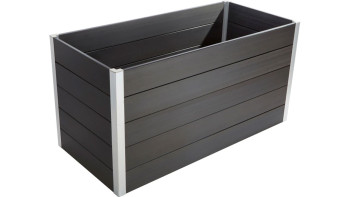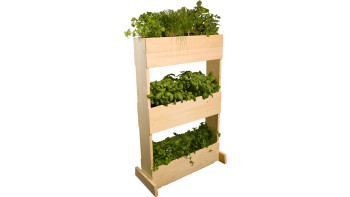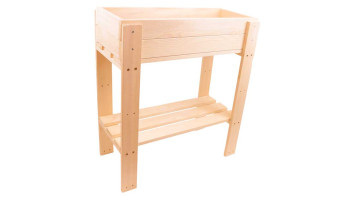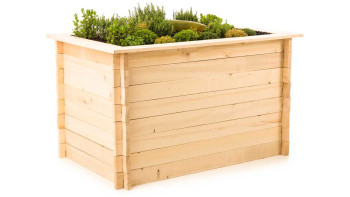Benefits of Raised Garden Beds for Improved Gardening and Higher Yields
Raised garden beds revolutionise your gardening by offering numerous advantages that traditional beds simply cannot match. The first and perhaps most significant benefit is the substantial increase in crop yields. Thanks to improved soil conditions and elevated temperatures in the bed, your plants grow faster and healthier, leading to a bountiful harvest. Moreover, raised garden beds significantly ease garden maintenance. They are more accessible, reduce back pain, and minimise weed growth, as their elevated structure forms a barrier against weed seeds. This saves time and effort in garden upkeep. Thus, raised garden beds are not only an investment in your garden productivity but also in your well-being.
Choosing the Ideal Location for Your Raised Garden Bed
Selecting the ideal location for your raised garden bed is crucial for your gardening success. Three main factors need to be considered: sunlight, accessibility, and soil quality. An optimal location receives at least six to eight hours of direct sunlight daily, which is essential for most types of vegetables and flowers. Additionally, the raised garden bed should be easily accessible to facilitate care and harvesting, making your gardening more enjoyable. The soil quality around and beneath the raised garden bed should be well-draining to prevent waterlogging, which could damage the roots. A well-chosen location not only promotes plant growth but also minimizes maintenance effort, allowing you more time to enjoy working in your garden and harvesting the fruits of your labor.
Buying a Raised Garden Bed: What to Look Out For
When purchasing a raised garden bed, choosing the right materials and the appropriate size is crucial for lasting satisfaction and successful gardening. Raised garden beds are available in various materials such as wood, metal, and plastic. Each material has its benefits: wood offers a natural aesthetic and blends beautifully into garden landscapes but requires regular maintenance to prevent weathering. Metal is very durable and easy to care for but can become hot under direct sunlight, which may stress the plants. Plastic is cost-effective, lightweight, and weather-resistant, but it may be less stable than other materials.
When selecting the size and height of your raised garden bed, consider your physical needs and the available space. A height of 60 to 80 cm is ideal for back-friendly gardening. The length and width should be chosen so that you can easily reach all areas of the bed without having to step into it. This promotes soil health and eases the care of your plants.
Optimise Your Garden Design with a Functional Herb Garden
An herb garden is a wonderful addition to any garden. It not only provides you with fresh herbs right at your doorstep but also transforms your garden into a fragrant oasis. Ideal for culinary herbs, it additionally enhances the ecological balance of your garden.
Design your herb garden to be not only functional but also aesthetically pleasing! Our innovative herb garden designs offer you creative solutions that enrich any garden ambiance. Whether in traditional raised garden beds or as part of a modern garden layout, herb gardens can be effectively and stylishly integrated. Use raised garden beds to facilitate the cultivation of various types of herbs and optimise their care. These elevated beds ensure better control over soil quality and ease access, making gardening more enjoyable.
Choose the Ideal Planter Box for Your Garden Style and Needs
Planter boxes are the perfect solution for experiencing garden joy in small spaces like balconies and terraces. They allow the flexible setup of flower, herb, or vegetable beds and blend elegantly into any setting.
Planter Boxes as a Flexible Solution for Balcony and Terrace
Planter boxes offer a flexible and stylish solution for turning balconies and terraces into blooming oases. Available in various materials such as wood, metal, and plastic, each has its own advantages and disadvantages. Wooden planter boxes are natural and environmentally friendly but may weather quickly without proper treatment. Metal planter boxes are robust and long-lasting but can conduct heat in summer warmth, overheating the plant roots. Plastic planter boxes are lightweight and weather-resistant, yet they often offer less stability and can fade over time.
When choosing the size and shape of your planter boxes, consider the available space and the type of plants you wish to grow. Deeper boxes are required for deep-rooting plants, while shallow boxes suffice for herbs and smaller flowers. Also, consider accessibility: higher planter boxes are easier to reach and can make gardening more pleasant, especially for those who have difficulty bending.
With the right choice, planter boxes can be not only a practical but also an aesthetic enhancement to your outdoor area. They allow you to enjoy colour and life in the smallest spaces and contribute to creating a pleasant ambiance.







